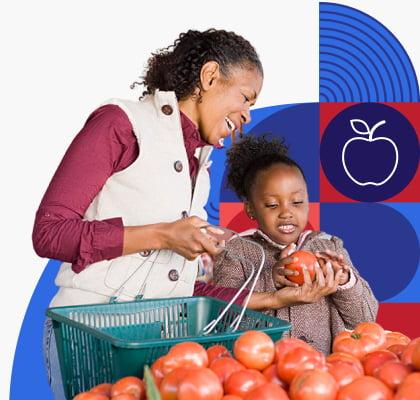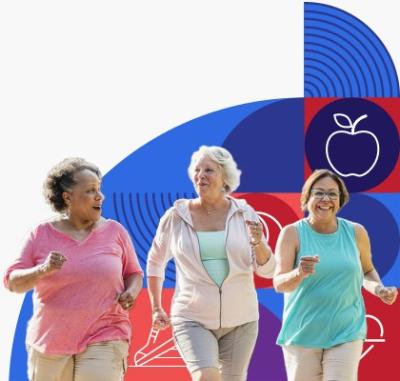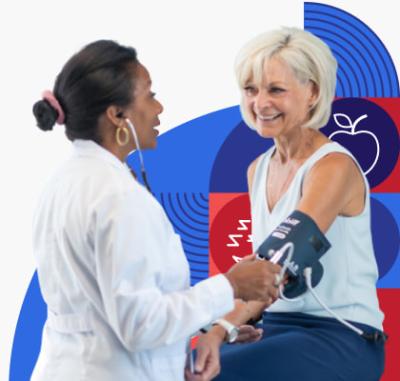Health Conditions
Eat Less Sodium: Quick Tips

Nine out of 10 Americans eat more sodium (salt) than they need. Eating too much sodium can lead to high blood pressure, which may raise your risk of heart attack and stroke.
The good news is that cutting down on sodium can help lower your blood pressure and keep your heart healthy.
Use these tips to help lower the amount of sodium in your diet. Try making just 1 or 2 changes at a time.
Know your sodium limit.
Ask your doctor how much sodium is okay for you. The general guidance for sodium limits is:
- Adults and teens age 14 years and older: no more than 2,300 mg (milligrams) a day
- Children ages 9 to 13 years: no more than 1,800 mg a day
- Children ages 4 to 8 years: no more than 1,500 mg a day
- Children ages 1 to 3 years: no more than 1,200 mg a day
Shop for lower-sodium foods.
Most of the sodium we eat doesn’t come from our salt shakers. Sodium is in almost all the processed and prepared foods we buy — even foods that don’t taste salty, like bread or tortillas.
When you’re shopping, limit these foods that are high in sodium or look for low-sodium versions:
- Processed meats, like deli meats (including turkey), sausages, and pepperoni
- Sauces, dressings, and condiments
- Instant flavored foods, like flavored rice and noodles
Use this shopping list to find lower-sodium foods at the grocery store.
Check the label.
Use the Nutrition Facts label to check the amount of sodium in foods and compare different options.
- Try to choose products with 5% Daily Value (DV) or less — 20% DV or more is high
- Look for foods labeled “low sodium” or “no salt added” — but keep in mind that some lower-sodium foods don’t have those labels, so you’ll need to check the Nutrition Facts label to be sure
Learn how to use the Nutrition Facts label to check for sodium.
Make healthy shifts.
Swap out foods that are higher in sodium for healthier options. You can:
- Snack on unsalted nuts instead of salted pretzels or chips
- Try cooking fresh or frozen chicken, lean meats, or seafood instead of buying deli meats or sausages
- Go for fresh vegetables, frozen vegetables without sauce, or canned vegetables with lower sodium
Get more ideas for healthy shifts and other tips for eating less sodium [PDF – 881 KB].
Cook more at home.
Making your own meals is a great way to eat less sodium because you’re in control of what goes into your food. Try these tips when you cook:
- If you use canned foods, rinse them before eating or cooking with them to wash away some of the salt
- Choose condiments and spreads that are unsalted or lower in sodium — and if you use regular spreads, use less
- Try different herbs and spices to flavor your food, like ginger or garlic, instead of salt
- Take the salt shaker off your table
If you’re too busy to cook every night, start by making dinner just 1 night a week. Check out these healthy recipes with less sodium.
Get less salt when you eat out.
Try these tips when you eat out or get takeout:
- Ask if there are any lower-sodium dishes on the menu
- When you order, ask them not to add salt to your food
- Get dressings and sauces on the side so you can add only as much as you need
Add more potassium to your diet.
Replace high-sodium foods with high-potassium foods. Eating foods with potassium can help lower your blood pressure.
Good sources of potassium include:
- Potatoes
- Cantaloupe
- Bananas
- Beans
- Milk
- Yogurt
Content last updated March 14, 2025
Reviewer Information
This information on eating less sodium was adapted from materials from the Dietary Guidelines for Americans.
Reviewed by:
Kara Beckman
ORISE Nutrition Policy Fellow
Office of Disease Prevention and Health Promotion
Dennis Anderson-Villaluz, MBA, RD, LDN, FAND
Lieutenant Commander, U.S. Public Health Service
Nutrition Advisor, Division of Prevention Science
Office of Disease Prevention and Health Promotion
Dana DeSilva
ORISE Health Policy Fellow
Office of Disease Prevention and Health Promotion
Janet de Jesus, MS, RD
Nutrition Advisor, Division of Prevention Science
Office of Disease Prevention and Health Promotion


